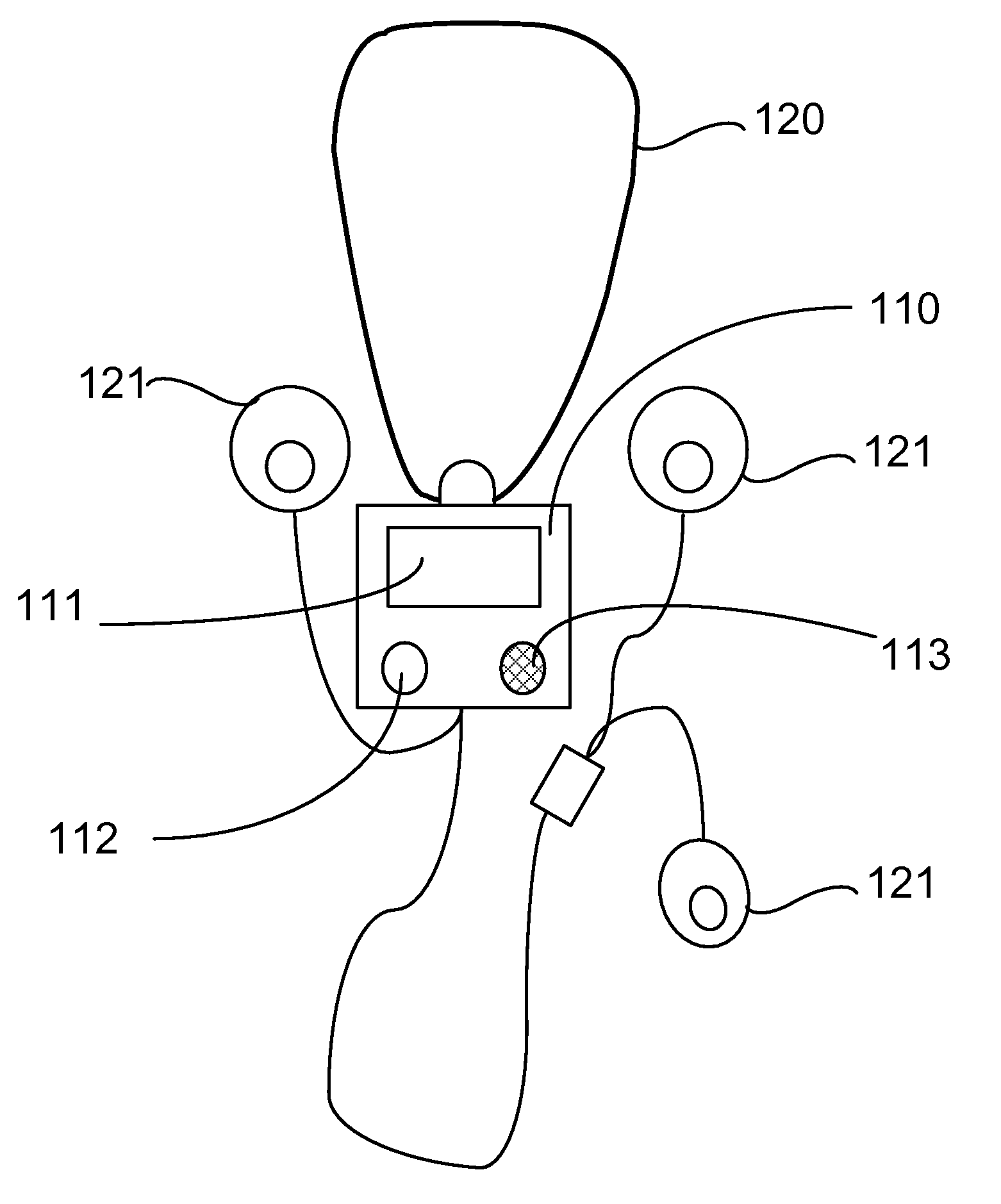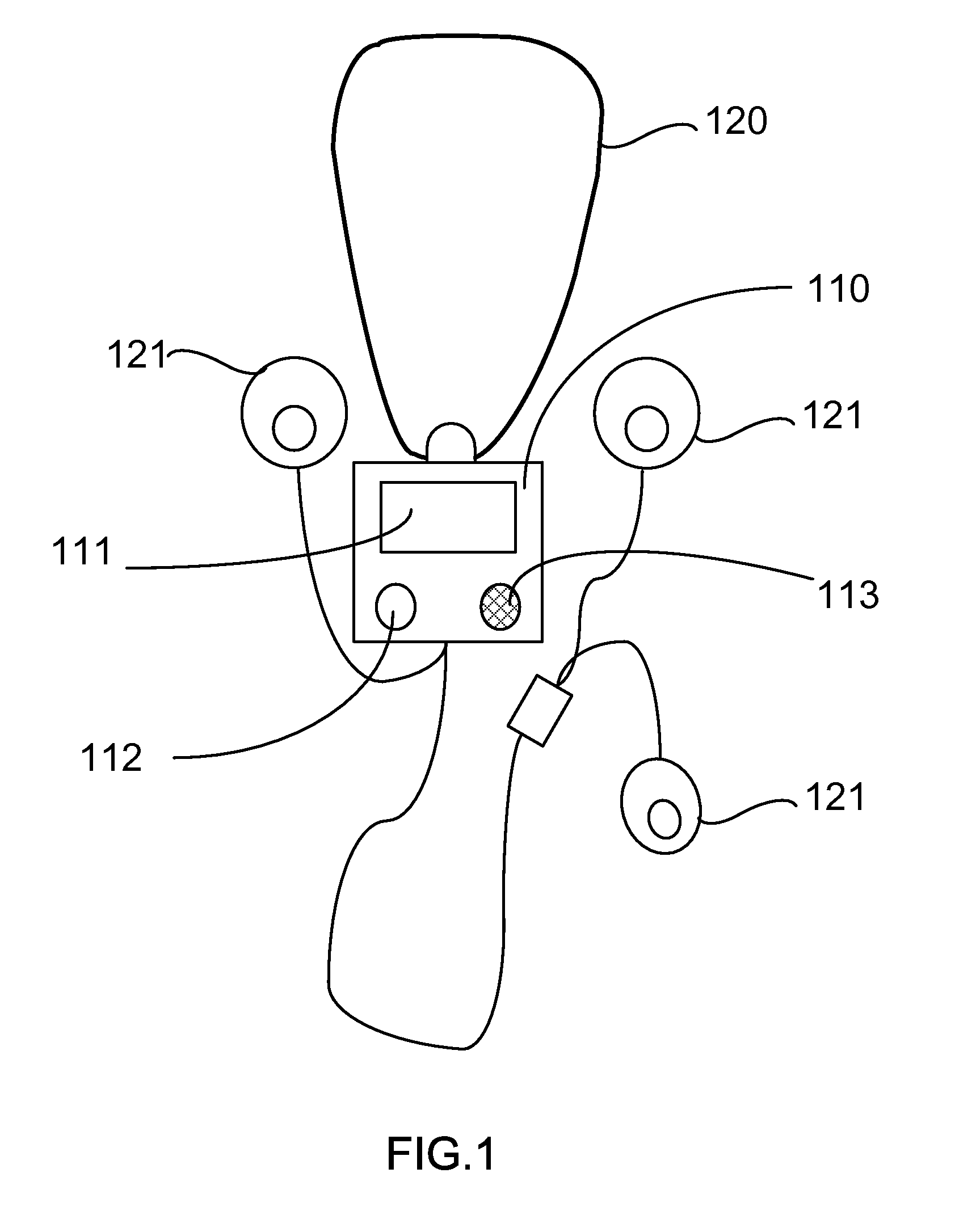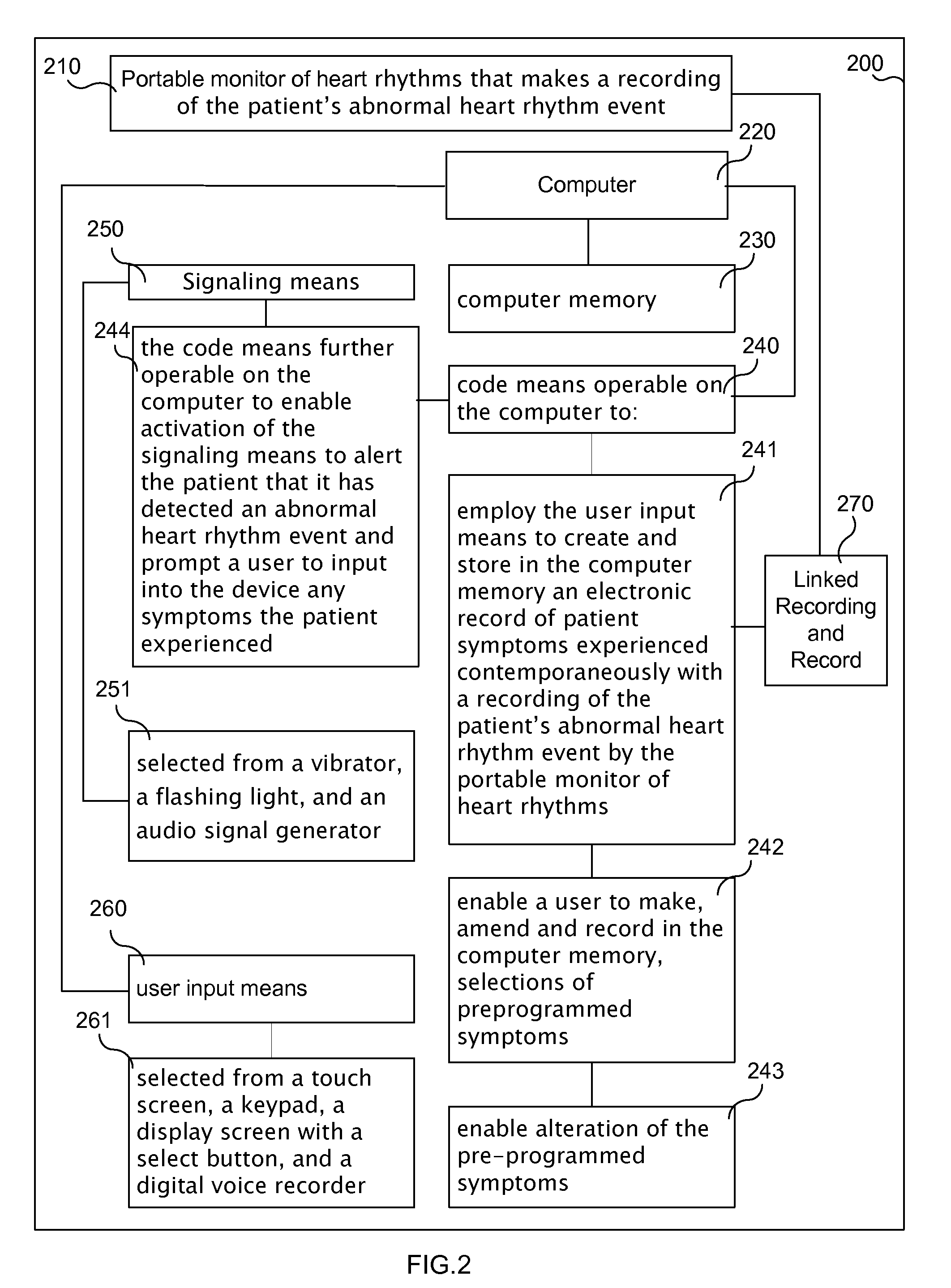Symptom recording patient interface system for a portable heart monitor
- Summary
- Abstract
- Description
- Claims
- Application Information
AI Technical Summary
Problems solved by technology
Method used
Image
Examples
example 1
[0052]When the Symptom Reporting Patient Interface System is built in to a conventional event monitor, the device functions in the following manner when the patient experiences a symptom:
[0053]The patient experiences a symptom (such as lightheadedness or fast heart beat).
[0054]The patient pushes the “symptom / record” button, and the system records the heart rhythm for 30-60 seconds immediately prior to the “symptom / record” button being pushed and for 30-60 seconds immediately after the “symptom / record” button being pushed
[0055]The Symptom Reporting Patient Interactive System then prompts the patient (with a text message on the patient interface screen and a “beeping sound”, vibration, or other method to notify the patient to respond) to input what symptom or symptoms they just experienced.
[0056]The patient interface screen displays a list of programmable symptoms (e.g. “chest pain”, “lightheadedness”, “shortness of breath”) for the patient to chose from and displays a message “Please...
example 2
[0064]When the Symptom Reporting Patient Interface System is built in to a conventional event monitor that is programmed to additionally detect and record on its own any pre-programmed abnormal heart rhythm, the device will function in the following manner when it automatically detects an abnormal heart rhythm. These steps build on those steps described in detail above:
[0065]The device automatically detects an abnormal heart rhythm. The device has been pre-programmed as to the criteria for considering a heart rhythm to be abnormal (such as slower or faster than a certain number of beats per minute).
[0066]When the device detects an abnormal heart rhythm, it “beeps,” vibrates or uses other similar manners to alert the patient that is has automatically detected an abnormal heart rhythm. These alerts may become louder or more intense if the patient does not respond to the alert within a pre-programmed period of time. This alert initiates the patient's input of symptoms in to the Symptom...
example 3
[0072]When the Symptom Reporting Patient Interface System is built in to a conventional Holter monitor (which just continuously records the heart rhythm over a period of several days), the device will function in the following manner when the patient experiences a symptom. Note that the steps described below are similar for the most part to those described above:
[0073]The patient experiences a symptom (such as lightheadedness or fast heart beat)
[0074]The patient pushes the “symptom / record” button. This activates the Symptom Reporting Patient Interactive System to begin the symptom input process. Since a conventional Holter monitor continuously records the heart rhythm, it is already recording the heart rhythm.
[0075]The Symptom Reporting Patient Interactive System then prompts the patient (with a text message on the patient interface screen and a “beeping sound”, vibration, or other method to remind the patient to respond) to input what symptom or symptoms they just experienced.
[0076...
PUM
 Login to View More
Login to View More Abstract
Description
Claims
Application Information
 Login to View More
Login to View More - R&D
- Intellectual Property
- Life Sciences
- Materials
- Tech Scout
- Unparalleled Data Quality
- Higher Quality Content
- 60% Fewer Hallucinations
Browse by: Latest US Patents, China's latest patents, Technical Efficacy Thesaurus, Application Domain, Technology Topic, Popular Technical Reports.
© 2025 PatSnap. All rights reserved.Legal|Privacy policy|Modern Slavery Act Transparency Statement|Sitemap|About US| Contact US: help@patsnap.com



